
Sir Walter Scott, 1st Baronet, was a Scottish historian, novelist, poet, and playwright. Many of his works remain classics of European and Scottish literature, notably the novels Ivanhoe (1819), Rob Roy (1817), Waverley (1814), Old Mortality (1816), The Heart of Mid-Lothian (1818), and The Bride of Lammermoor (1819), along with the narrative poems Marmion (1808) and The Lady of the Lake (1810). He had a major impact on European and American literature.

Archibald David Constable was a Scottish publisher, bookseller and stationer.

Lady Charlotte Susan Maria Bury was an English novelist, who is chiefly remembered in connection with a Diary illustrative of the Times of George IV (1838).
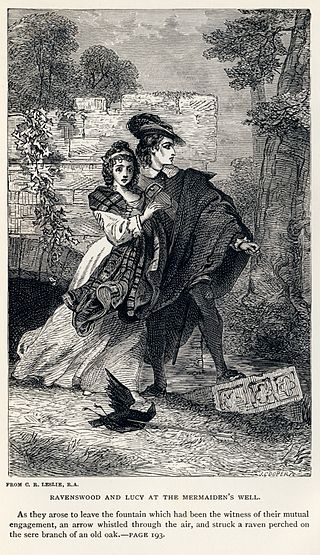
The Bride of Lammermoor is a historical novel by Sir Walter Scott, published in 1819, one of the Waverley novels. The novel is set in the Lammermuir Hills of south-east Scotland, shortly before the Act of Union of 1707, or shortly after the Act. It tells of a tragic love affair between young Lucy Ashton and her family's enemy Edgar Ravenswood. Scott indicated the plot was based on an actual incident. The Bride of Lammermoor and A Legend of Montrose were published together anonymously as the third of Scott's Tales of My Landlord series. The story is the basis for Donizetti's 1835 opera Lucia di Lammermoor.
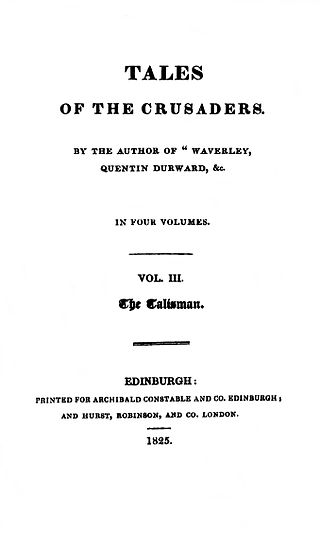
The Talisman is one of the Waverley novels by Sir Walter Scott. Published in 1825 as the second of his Tales of the Crusaders, it is set during the Third Crusade and centres on the relationship between Richard I of England and Saladin.
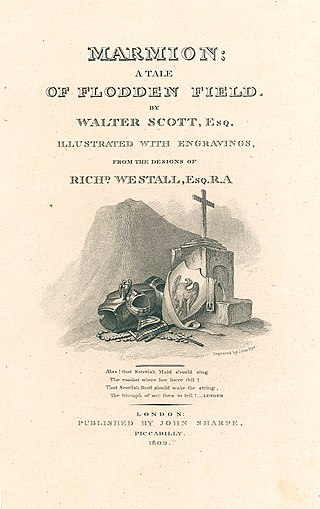
Marmion: A Tale of Flodden Field is a historical romance in verse of 16th-century Scotland and England by Sir Walter Scott, published in 1808. Consisting of six cantos, each with an introductory epistle, and copious antiquarian notes, it concludes with the Battle of Flodden in 1513.

One of the Waverley Novels by Walter Scott, The Black Dwarf was part of his Tales of My Landlord, 1st series (1816). It is set in 1708, in the Scottish Borders, against the background of the first uprising to be attempted by the Jacobites after the Act of Union.

The Lay of the Last Minstrel (1805) is a narrative poem in six cantos with copious antiquarian notes by Walter Scott. Set in the Scottish Borders in the mid-16th century, it is represented within the work as being sung by a minstrel late in the 1600s.

Castle Dangerous (1831) was the last of Walter Scott's Waverley novels. It is part of Tales of My Landlord, 4th series, with Count Robert of Paris. The castle of the title is Douglas Castle in Lanarkshire, and the action, based on an episode in The Brus by John Barbour, is set in March 1307 against the background of the First War of Scottish Independence.

Watson's Dodd is a fell in the English Lake District, a minor rise on the main ridge of the Helvellyn range in the Eastern Fells, but a prominent shoulder on the west side of that range.

The Lady of the Lake is a narrative poem by Sir Walter Scott, first published in 1810. Set in the Trossachs region of Scotland, it is composed of six cantos, each of which concerns the action of a single day. There are voluminous antiquarian notes. The poem has three main plots: the contest among three men, Roderick Dhu, James Fitz-James, and Malcolm Graeme, to win the love of Ellen Douglas; the feud and reconciliation of King James V of Scotland and James Douglas; and a war between the Lowland Scots and the Highland clans. The poem was tremendously influential in the nineteenth century, and inspired the Highland Revival.

Gwendolen is a feminine given name, in general use only since the 19th century.

The Vision of Don Roderick is a poem in Spenserian stanzas by Sir Walter Scott, published in 1811. It celebrated the recent victories of the Duke of Wellington during the Peninsular War, and proceeds of its sale were to raise funds for Portugal.
Harold the Dauntless is a narrative poem in six short cantos by Walter Scott, published in 1817. It employs a variety of metres.
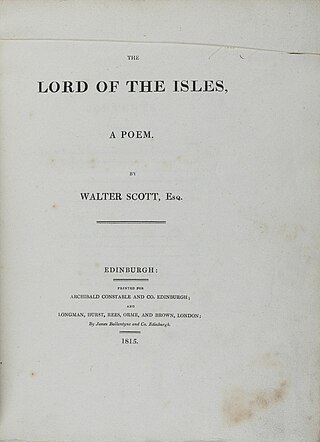
The Lord of the Isles is a narrative poem by Walter Scott in six cantos with substantial notes. Set in 1307 and 1314 Scotland it covers the story of Robert the Bruce from his return from exile in Ireland to the successful culmination of his struggle to secure Scottish independence from English control at the Battle of Bannockburn. Interwoven with this account is a romantic fiction centring on one of the Bruce's prominent supporters, Ronald, Lord of the Isles, involving his love for the Bruce's sister Isabel, who eventually takes the veil, and the transfer of his affections to Edith of Lorn to whom he had been betrothed at the beginning of the poem and whom he marries at the end.
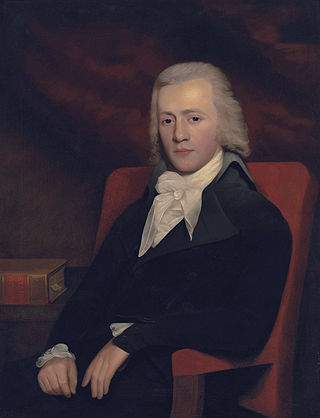
William Erskine, Lord Kinneder (1768–1822), was a friend and confidant of Sir Walter Scott, and a scholar and songwriter.

Rokeby (1813) is a narrative poem in six cantos with voluminous antiquarian notes by Walter Scott. It is set in Teesdale during the English Civil War.
The Field of Waterloo is a poem by Walter Scott, written and published in 1815. It is in iambic tetrameters and trimeters with a few Spenserian stanzas at the end. The work moves from a depiction of the site of the battle, with farm life renewing in the autumn, to an account of the conflict, highlighting Napoleon and Wellington, and a roll-call of prominent British casualties.
The letters of Sir Walter Scott, the novelist and poet, range in date from September 1788, when he was aged 17, to June 1832, a few weeks before his death. About 7000 letters from Scott are known, and about 6500 letters addressed to him. The major repository of both is the National Library of Scotland. H. J. C. Grierson's The Letters of Sir Walter Scott (1932–1937), though it includes only about 3500, remains the standard edition.
Illustrations of Northern Antiquities (1814), or to give its full title Illustrations of Northern Antiquities, from the Earlier Teutonic and Scandinavian Romances; Being an Abstract of the Book of Heroes, and Nibelungen Lay; with Translations of Metrical Tales, from the Old German, Danish, Swedish, and Icelandic Languages; with Notes and Dissertations, was a pioneering work of comparative literature which provided translations and abstracts of various works written in medieval Germany and Scandinavia. Its three authors were Henry Weber, who précised the Nibelungenlied and Heldenbuch; Robert Jamieson, who translated Danish and other ballads, stressing their close connection with Scottish ballads; and Walter Scott, who provided an abstract of Eyrbyggja saga. It significantly extended British readers' access to early Germanic literature.
















